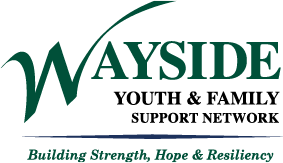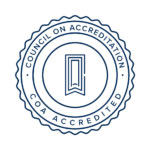Wayside’s Commitment to
Diversity, Equity & Inclusion (DEI)
Mission Statement: Wayside is a human service agency committed to anti-racism, social justice and advocacy.
We have five goals to guide us in fulfilling our mission:
- Creating trust.
- Having courageous conversations.
- Increasing social capital.
- Applying an equity lens.
- Measuring data and holding ourselves accountable.
Our DEI Guiding Principles
Wayside is one of the most committed DEI organizations in the Human Services field. In fact, Wayside ranks in the 88 percent of agencies nationally in staff satisfaction with our commitment to diversity. However, there is no easy solution to ensuring equity in the workplace which is why we started the hard work of shaping our organization into a nonprofit leader of DEI.
What is Wayside’s Statement of Gender Inclusivity?
As part of the agency’s Strategic Goals, Wayside leadership identified a key driver was to “Support our staff capacity to serve by increasing satisfaction, compensation, diversity and career development, as evidenced by increased recruiting and retention.” As a result, one of the agency’s goals was to “focus substantial efforts upon diversity and inclusion across the agency, becoming an affirming and welcoming community as a result,” and “develop our expertise and clinical staff to be a significant resource for LGBTQ+ youth and families.”
In order to accomplish this, Wayside is committed to respecting every staff, client and community member’s gender identity and pronoun preference.
What is a pronoun?
Pronouns allow us to refer to someone without having to repeat the person’s name. Because of pronouns, we can say, “Beth is going to her office where she will call her friend,” instead of, “Beth is going to Beth’s office, where Beth will call Beth’s friend.” Because pronouns are a “stand-in” for a person’s name, it is just as important to get them right as it is to call someone by the correct name.
Common and gender neutral pronouns include, but are not limited to: she, her, hers, he, him, his, they, them, theirs, ze, zem, zirs.
Why are we emphasizing sharing pronouns?
In American English, pronouns are also tied to gender. When you choose a pronoun to refer to someone, you are assuming and labeling that person’s gender. Because gender is not binary (i.e. there are more genders than just male and female), and you can’t know someone’s gender identity by looking at them, we can’t make assumptions about a person’s gender or which pronouns we should use to refer to that person.
How can I learn more?
For more information about pronouns and their importance to gender inclusivity, see Social Justice Toolbox’s “Pronouns: Choose Your Own Adventure Deck.”
Check out this helpful guide geared towards clinicians and mental health professionals on Non-Binary Gender Identities from The Society for the Psychological Study of Lesbian, Gay, Bisexual and Transgender Issues.
Visit the YW Boston’s Gender Inclusivity page, which served as a resource for developing our Statement of Gender Inclusivity.




